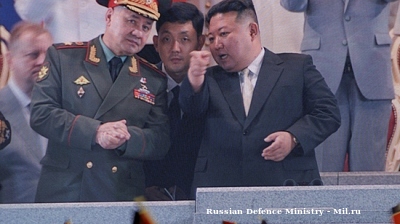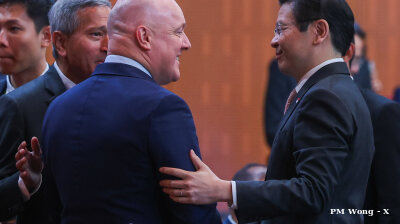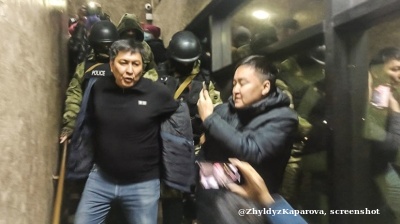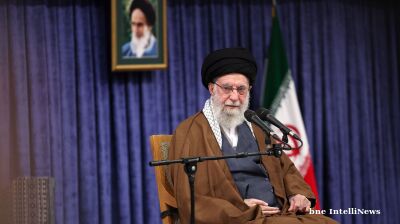Analysts say the Kremlin is likely providing a launch for an Iranian satellite as part of continuing efforts to leverage its relationship with Tehran in order to receive drones for use in Ukraine.
Russian state-owned space agency Roscosmos announced on August 3 that Russia, using a Soyuz rocket, would launch a remote-sensing satellite, named Khayyam, into orbit on behalf of Iran on August 9.
In an assessment, the Washington, DC-based non-partisan Institute for the Study of War (ISW) said: “The Kremlin may intend this launch to encourage or repay Tehran for the provision of Iranian drones that would be employed in operations in Ukraine, and possibly other military equipment or support.”
It added: “Iran has a huge ballistic missile arsenal and domestic missile manufacturing capabilities that it could provide to Russia in exchange for economic and military cooperation. Iran has prioritized the development of its military space program in recent years and launched one satellite in April 2020 and one in April 2022. US and Middle Eastern officials stated as early as June 2021 that Russian officials were preparing to send a Russian-made Kanopus-V satellite to Iran, which would expand Tehran’s overall surveillance capabilities in the Middle East and beyond.”
The Pentagon on May 20 issued a rare warning to Tehran against a potential transfer to Russia of hundreds of drones that Moscow could put to use in Ukraine. In relation to the likelihood of Iran shipping drones to Russia, when asked about the prospect by reporters, US Defense Secretary Lloyd Austin said: “We would advise Iran not to do that. We think it’s a really, really bad idea. And I’ll leave it at that.”
Russia and Iran, meanwhile, also lately signed aviation cooperation agreements that could help both countries with sanctions mitigation in both the civilian and defence spheres. The sourcing of aircraft components, maintenance and repairs, the provision of commercial flights and even the acquisition of Russian fighter planes by Iran could eventuate if the aviation understanding is pushed to its fullest extent.
Most sanctioned
Since the West responded to the Kremlin’s late February invasion of Ukraine, Russia has replaced Iran as the most sanctioned country in the world. Hardly a day goes by now without the announcement of some form of new or expanded Iranian-Russian trade or investment deal. A difficulty for the relationship, though, is that Iran and Russia are competitors when it comes to selling oil to markets around the world that are not supportive of Western sanctions policy, with China a particularly big prize in this area.
Iran was top for imports of Russian wheat in July, while Kazakhstan fears losing Iran to Russia as its main barley customer.
Russia, meanwhile, is increasingly turning to transit routes via Iran, which provides access to the Persian Gulf and Indian Ocean, for import and export shipping needs.
Moscow and Tehran have also recently signed some major oil and gas investment agreements. For instance, Iran intends to bring Russia into a $60bn project to build gas export pipelines to Oman and Pakistan.
The West, meanwhile, might hope that if a new phase of talks aimed at reinstating the 2015 nuclear deal, or JCPOA—under which in return for curbing its nuclear development programme, Iran is boosted by the lifting of sanctions on its economy—proves successful, Iran’s increasing closeness with Moscow might be restrained. The Vienna talks on reviving the JCPOA were due to restart on August 4, with representatives of Iran, France, Germany, the UK, Russia, China and the US due in the Austrian capital.
News

North Korea fires cruise missiles to mark Trump's arrival in the South
State media framed the launch as a reminder of North Korea’s military strength to what it described as its enemies. The launch does not breach United Nations restrictions, since the rules prohibit ballistic missile testing, not cruise missiles.

Singapore PM Lawrence Wong heads to APEC in bid to deepen Seoul ties
The visit will be Wong’s first trip to South Korea since he assumed office in May 2024, and the first by a Singaporean prime minister since 2019 – in part to recognise the 50th anniversary of diplomatic relations between the two nations.

US–South Korea investment deal on ice – for now
After a triumphant round of investment pledges in Tokyo, Donald Trump’s state visit to South Korea presents a far more challenging negotiation.

Kyrgyzstan bans three media titles as “extremist organisations”
Populist-nationalist president Sadyr Japarov, due to meet Donald Trump next week, denies introducing authoritarian controls.




